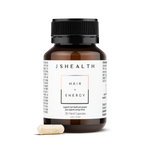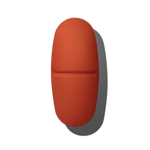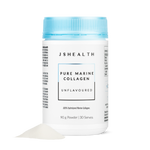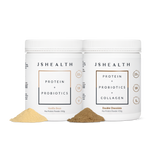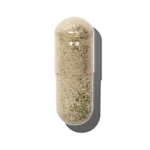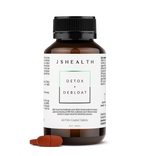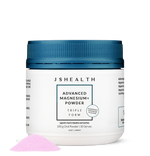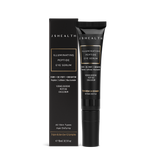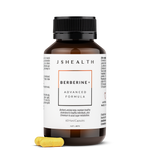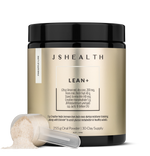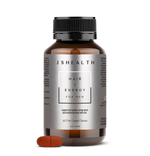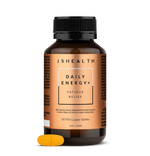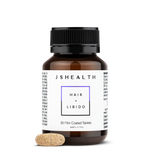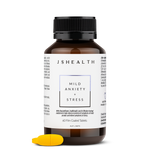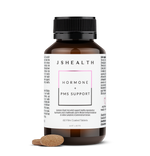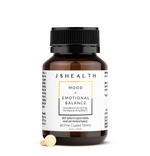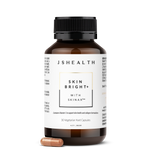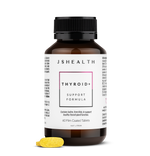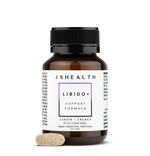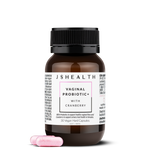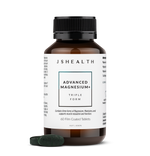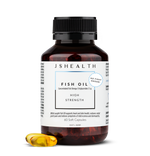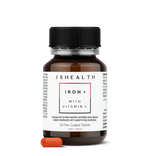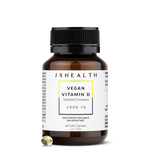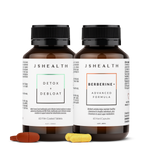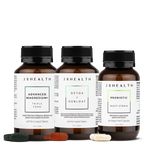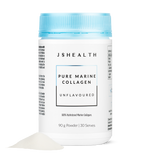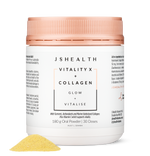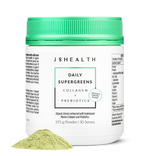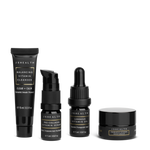4 Benefits of Iron Tablets
Iron tablets, a valuable supplement for ensuring adequate iron intake, play a vital role in supporting overall health. Navigating the world of vitamins and minerals can be challenging, especially when it comes to identifying which might be best suited to meet your particular health goals. Most standard multivitamins contain over 20 nutrients, such as calcium, vitamins C and D, magnesium and potassium
Although understanding the individual functions of each nutrient isn’t always necessary, being familiar with the key players can contribute to better holistic health and wellness management. With this in mind, let’s talk about the four benefits iron tablets can offer you.
What Is Iron?
Iron is not just element 26 on the periodic table; it is also one of the essential minerals the body needs to function. One of the major components of haemoglobin — iron is a protein in red blood cells that helps to transport oxygen from your lungs to the rest of your body.
But it’s not just iron that plays a role — ferritin also comes into play. Ferritin is a protein in the blood that helps to store iron in the bone marrow, liver, muscle tissue and spleen. When iron is needed, a second protein called transferrin binds to it and transports it from the iron stores to the body like any other mineral source.
The recommended daily allowance (RDA) of iron for adult men ages 19 to 50 is 8 mg, 18 mg for adult women ages 19 to 50, 27 mg for pregnant people and 9 mg for those who are breastfeeding.
What Are Some Signs of Iron Deficiency?
When you don’t have enough iron circulating in your system (a condition called iron-deficiency anaemia), your body cannot create the proper amount of haemoglobin you need to provide oxygen where it needs to go. Due to the lack of oxygen, one of the first and most significant symptoms of iron deficiency people may notice is fatigue.
However, there are other symptoms of iron deficiency to be aware of:
- Brittle nails
- Cold sensitivity
- Confusion
- Increased hair loss
- Pale skin
- Pica (a craving for non nutritive, nonfood materials like clay, dirt or ice)
- Rapid heart rate (tachycardia)
- Shortness of breath
Certain groups of people may have a higher susceptibility to experiencing reduced iron levels in the body — young children, those experiencing menstruation (especially if heavy periods are present), pregnant women and those who don’t get enough iron in their daily diet. Blood loss of any kind, such as after significant trauma or surgery, may also lead to iron deficiency.
Ask your doctor for medical advice if you think you may be dealing with low levels of iron. They may recommend a routine blood test, known as a complete blood count (CBC), to check your haemoglobin levels. Ferritin levels can also be checked, as it’s possible to have a normal iron level but low iron stores.
How To Increase Your Iron Levels
There are two primary methods for obtaining iron – through consuming iron-rich foods or by taking supplements.
The iron you can get from food is classified as “heme” or “non-heme.” Heme sources of iron can only be obtained from animals, specifically by eating meat, poultry and seafood. On the other hand, non-heme iron can be found in plant-based sources — nuts, leafy greens, legumes, seeds and whole grains. You can also get non-heme iron from fortified foods such as bread and cereals.
Of the two, heme iron is more easily absorbed. Non-heme iron absorption can be impacted by various factors, which makes it a more fickle option. Combining a non-heme iron source with a heme iron source and vitamin C can help with absorption, while things like bran fibre and calcium supplements can inhibit it.
However, if you choose not to eat meat or struggle to get enough iron in your diet, iron tablets are a great alternative. Although the iron found in dietary supplements isn’t quite as easily absorbed as it is with natural sources, they remain an excellent way to support your iron levels. Many iron tablets are also blended with vitamin C, helping to increase iron absorption.
Supplemental iron is also found in multiple forms and listed under various names — ferrous fumarate, ferrous gluconate and ferrous sulphate. Additionally, some iron tablets have two different amounts listed. The larger number is generally the chemical compound form of iron (iron plus the salts it is chemically bound to), while the smaller number represents the elemental iron (the iron available for the body to absorb).
What Are the Benefits of Iron Tablets?
Because the amount of iron in your blood directly relates to its ability to oxygenate the body, the health benefits of iron tablets for supplementing those levels are numerous.
Here are five benefits of iron tablets and how they work.
1. Helps Maintain Healthy Iron Levels
The number one reason that people take iron tablets is to support and maintain their iron levels. When those iron levels (which also lowers haemoglobin levels), it can have a systemic effect on the body.
Significant iron deficiency can even lead to chronic, potentially fatal health issues like. Keeping your iron levels at a normal level can help reduce your risk of developing complications — but you should consult your doctor to determine whether your iron levels are healthy, and what you need to do to maintain these.
2. Helps Support Energy Levels
We’ve all wished we had more energy to do the things we want to do without feeling exhausted at the end of the day. One of the main benefits of iron tablets is their ability to help support energy levels and fight feelings of tiredness.
Taking iron with other supplements known to support energy levels, such as vitamin B12, may help even further.
3. Can Support Athletic Performance
Another one of the responsibilities of iron is to help produce myoglobin, a protein that helps bring oxygen directly to the muscles. Professional athletes, especially those that run long-distance marathons or participate in endurance cycling events, are generally most at risk for iron deficiency.
When you have the right amount of iron in your body, your athletic performance can also benefit.
4. Helps Support Cognition
The brain, much like the rest of the body, relies on proper blood circulation and oxygen supply to function effectively; any imbalances can significantly impact on overall wellbeing. Even a slightly lower iron level can affect the brain and our ability to think clearly and concentrate.
Maintaining healthy iron levels can help support the proper functioning of neurons and keep your cognitive performance in great shape.
Are There Side Effects of Iron Tablets?
While the benefits of iron tablets far outweigh the risks, there are a few side effects that you may experience when taking them.
For most people, the most significant side effect is constipation. Although the tablets can help boost your iron levels, they are not as readily absorbed as more natural forms of the mineral. The build-up of excess iron in the body and the resulting impact on your gut microbiome can trigger symptoms such as constipation.
Taking a stool softener (being sure to consult your healthcare provider first to see if this is most suitable for you!), drinking at least 1.5 to 2 litres of water a day, eating plenty of fibre and even adding a vitamin C supplement can help to reduce your risk of experiencing constipation. Many of the newer formulations of iron tablets are formulated to be non-constipating, so be sure to read the label before you buy.
Other GI side effects from iron tablets include abdominal discomfort, nausea and vomiting. While they are best absorbed when taken on an empty stomach, some people may need to eat a small snack to prevent these issues.
Luckily, the risk of developing an iron overdose or toxicity is slim — the body is good at storing excess iron for future use if you do overconsume. However, those with a genetic disorder known as hereditary hemochromatosis (where iron builds up in certain areas of the body) are at much higher risk and may need to avoid iron supplementation unless specifically recommended by their healthcare professional.
Symptoms of an iron overdose can include coma, internal bleeding and seizures. Long-term toxicity can also lead to heart disease, liver cirrhosis and liver cancer.
The UL (or tolerable upper intake level) for iron is 45 mg for adults — anything above that level may be considered unsafe, and you should contact your doctor for specific advice.
In Summary
Our bodies require iron to function properly, and especially to help carry oxygen in the blood from the lungs to everywhere on the body it’s needed. When your iron levels drop below normal, you can experience a whole host of side effects — some of which can be truly detrimental.
However, the benefits of iron tablets can not only help to prevent these issues, but also help with other symptoms such as restless leg syndrome and cognitive function.
Sources:
Iron-Deficiency Anemia | NHLBI, NIH
Pica - Psychiatric Disorders | MSD Manual Professional Edition
